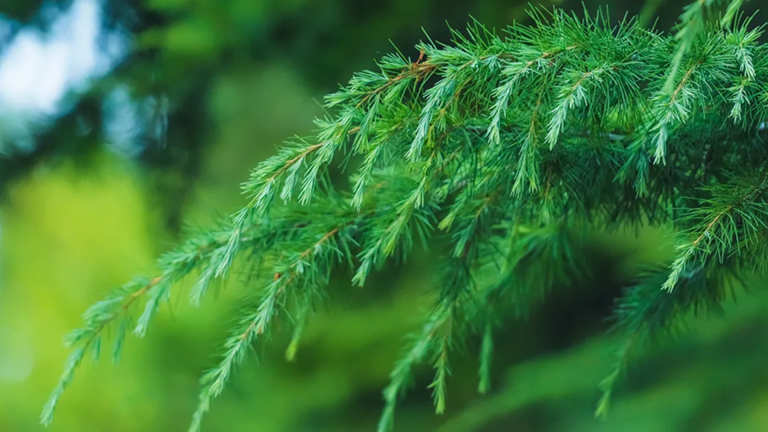Have you ever looked at a tree and asked yourself, “What kind is that?” You’re not the only one. Lots of people want to know how to tell trees apart just by looking at their leaves. In this short guide, I’ll help you figure out how to spot juniper leaves with ease.
You don’t need to be an expert. You just need to know what to look for. Juniper trees can seem tricky at first because they look like other evergreens.
But once you know a few signs, they’re pretty easy to tell apart. I’ll share some simple tips that anyone can follow. I’ve spent years learning about trees. And I’m here to help you understand what makes juniper leaves different.
If you’re on a hike or just walking around your block, these tips will help you tell if that tree is a juniper. Let’s get started. It’s easier than you think.
What Are Juniper Tree Leaves?

Junipers don’t have normal leaves like many other trees. What most people call “juniper leaves” are really tiny, hard scales that cover the branches. This is the first big clue to help you spot a juniper tree.
Unlike wide, flat leaves on trees that drop their leaves in fall, junipers have special green parts that save water. These trees are part of the cypress family, and they stay green all year. There are about 60 kinds of junipers around the world.
Some types have sharp, pointy needles. Others have flat, scaly parts that overlap. Young junipers usually start with needles, but as they grow older, the needles change into scales.
These tough “leaves” help junipers live in dry, hot places. They don’t let much water escape, and they keep the tree safe when it gets very hot or cold.
That’s why you’ll see a lot of junipers in deserts and dry hills. Knowing this simple difference can help you tell a juniper from other trees!
Identification of Juniper Tree Leaves

Spotting juniper leaves is easy when you know the basics. Just look for either needle-like or scale-like foliage that’s unique to these trees. Follow these simple steps to quickly identify junipers among other similar evergreens.
1. Observe the Leaf Shape
The shape of the leaf is one of the first things you should notice. Mature junipers usually have small, flat scales that stick close to the stem.
These scales look like roof shingles or fish scales and form a smooth, tight surface. Some young junipers, or certain types, like Common Juniper, grow sharp needles instead. These needles stick out and feel prickly when touched.
If a plant has both needles and scales, it’s probably still growing up. Junipers like the Chinese Juniper and Eastern Red Cedar start with needles, but their leaves turn to scales as they age.
2. Examine the Leaf Edges
Juniper leaf edges can help tell one species from another. Use a magnifying glass if you can. Most scale leaves have smooth edges, but a few may show tiny teeth if you look really closely.
Some scales also have a tiny dot on them that might give off a little sticky stuff. These leaves press tight against the branch, though the tips may lift just a bit. Needle leaves have sharp points that can poke your skin.
That helps keep animals from eating them. Watch how the edges meet and fit together—that pattern is a big clue in spotting a juniper.
3. Determine the Leaf Arrangement
The way the leaves grow on the branch also gives you clues. Juniper leaves usually grow in pairs across from each other or in sets of three. This creates a star-like or square shape when you look at the branch from the end.
These tight patterns make the branches look more round or boxy, not flat. This is different from trees like pines, which have needles in bunches, or spruces, where the needles grow one at a time.
Also, each leaf connects directly to the stem, not with a little stalk. That gives the whole branch a smooth look.
4. Check if the Leaf is Simple or Compound
All juniper leaves are simple, not compound. This means each needle or scale is just one full leaf, not a group of little pieces.
Even though it may seem obvious, this helps you rule out trees with divided leaves, like ferns or ashes. Simple leaves use less water and are better for hot, dry places. Junipers grow well in deserts and rocky hills for this reason. Their small leaf surface keeps them from drying out.
If you’re not sure, just remember—if the leaf looks like one solid part with no smaller pieces, it’s simple, and that’s what junipers have.
5. Look at the Leaf Veins
Juniper veins are hard to see. Unlike the wide leaves of many trees, you won’t spot a network of lines here. The veins in juniper leaves are tiny and usually stay hidden under the waxy layer.
Juniper leaves don’t need big, open veins because they’re built to save water. Instead of looking for veins, pay more attention to how the leaves are shaped and how they grow along the stem. That will tell you more.
Since conifers like junipers don’t show their veins clearly, it’s better to check for things like shape, feel, and leaf pattern instead.
6. Take Note of Color, Texture, and Smell
Junipers come in different shades, depending on the type. You might see bright green, bluish-green, or even a silver-gray color.
Their leaves feel firm and a little waxy, which helps them hold on to water. One thing you can always count on is the smell. Crush a few leaves between your fingers, and you’ll get a strong scent. It’s sharp and kind of like gin.
That’s because gin uses flavor from juniper berries. Some types of junipers also have a whitish coating that makes them look silvery. This is easy to spot on garden types like Blue Point Juniper.
7. Use an Identification Guide or App
If you’re still unsure, don’t worry—there’s help. You can use a plant ID app like iNaturalist, Seek, or PlantNet. These apps can tell you what you’re looking at with just a photo.
You can also look at tree guides made for your area. These books have pictures and notes that make it easier to tell which species you’ve found. Local nature centers sometimes have tours with tree experts, too.
If you’re stuck, take clear photos of the leaves, bark, and any berries. Show them to a gardening club or plant expert nearby. They’re usually happy to help out.
How to Care for Juniper Tree Leaves?

Keeping juniper leaves healthy means giving them the right care. These plants don’t need much, but they do better when you meet a few key needs.
Water new junipers often during their first year so their roots grow deep and strong. After that, only water them during long dry spells, and make sure the soil dries between waterings.
Place them in full sun, at least 6 hours a day, so their leaves keep their bright color. Prune any dead or sick branches, but don’t cut into bare wood since new leaves won’t grow there.
Watch out for bugs like spider mites and avoid heavy plant food. Give them space to grow with good airflow, and mulch the base in cold months to protect the roots.
Conclusion
Learning to spot juniper trees gets easier the more you practice. At first, it might seem hard to tell them apart from other evergreens.
But once you understand the clues—like their scale-shaped or needle-like leaves, their one-of-a-kind smell, and the way their leaves grow—you’ll start noticing them everywhere.
Juniper leaves aren’t just interesting to look at. They’re also smart in the way they work. These small, tough leaves help the tree stay alive in places that are hot, dry, or rocky. That’s why you’ll often see junipers where many other trees wouldn’t make it.
Now that you know what to look for, take some time to go outside and test what you’ve learned. You can check your backyard, walk around your neighborhood, or visit a park or hiking trail where wild plants grow.
The more trees you see, the easier it’ll be to recognize different types of junipers. Have you come across any near where you live? Did you notice the different shapes and smells? I’d love to know what you’ve found. Drop your thoughts or questions in the comments below—I’m always happy to help or hear your stories!
Frequently Asked Questions
Are Juniper Leaves Poisonous?
Most juniper leaves aren’t harmful to people, but eating them can upset your stomach. Some types are dangerous to animals like cows and horses. It’s safest not to eat the leaves at all, just to be careful.
How Do I Tell a Juniper from A Cedar?
Junipers grow small, round berries, while cedars have dry, woody cones. If you crush the leaves, junipers smell sharp like gin. Cedars smell fresher or lemon-like. These simple clues help tell them apart when you’re not sure.
Why Are My Juniper Leaves Turning Brown?
Brown leaves might mean the plant isn’t getting enough water or has a fungus. Make sure the soil isn’t too dry and that air can move around the plant. Good care usually helps bring the leaves back to green.
Can You Eat Juniper Leaves?
You should not eat juniper leaves. They’re not safe for food. Only some berries, like the ones from Juniperus communis, are used in cooking or for making gin. Stick to looking, not tasting, when it comes to the leaves.













